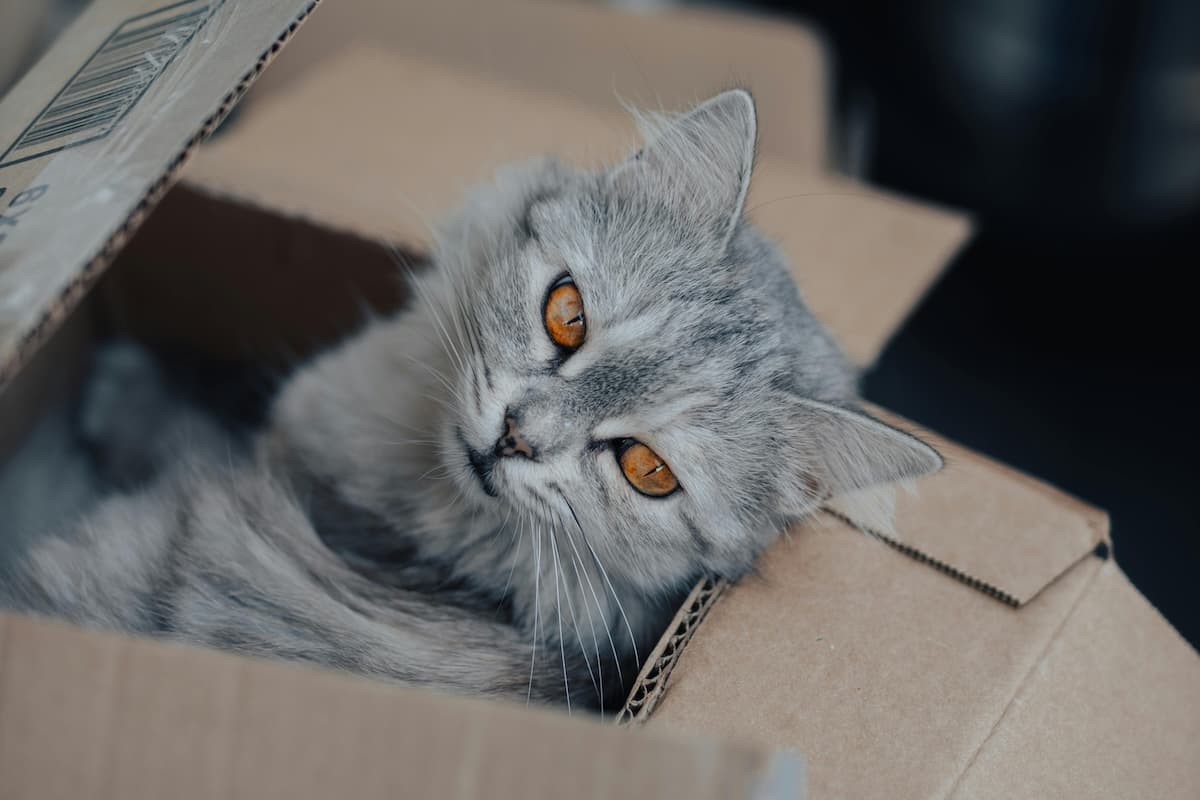

Settling the Age-Old Question Once and for All: Are Cats Liquid?
It’s been a pretty longstanding internet meme to say that cats’ state of matter isn’t solid but actually liquid. Haha, right? Well, right- but also kind of scientifically right. Read on for the skinny on why your cat may be more like the water in their bowl than you imagined.

Writer Jannah Berkley
6 min read

It’s time to answer the age old question, whispered by the sages since time immemorial: are cats liquid? Spoiler alert: the science says they are… at least in one dimension.
A liquid is defined as a substance “that has no independent shape but has a definite volume and does not expand indefinitely and that is only slightly compressible.” So that clears that up.
Cats are notoriously getting cozy in the strangest formations and fitting their furry bodies into any container. With enough time, they adapt their bodies to fill any space and therefore, could be defined as liquid! Right?
This silly question has gone from a cat lovers’ inside joke, to a viral meme, to a full-on scientific study. But how did we go from cat in a jar stickers to published papers being presented on Ivy League stages? Here’s the full timeline tracking the age-old question- and all the scientific answers from around the world.
Dawn of time (A.K.A. when humans started keeping cats as pets)
This is not a new phenomenon. As far back as we can recall, cat owners have been fascinated and perplexed by their cats’ ability to squish, mold, and slide their bodies through impossibly small spots. This cat somehow got behind the fridge by squeezing through the crack in the cabinet. That cat got out the window by slipping between the bars. The other cat molded their body to fit perfectly in the mixing bowl on the counter or the shoebox in the closet. This curiosity has always been around and been a topic of debate, even when it doesn’t kill them.
Once ‘I Can Has Cheezburger?’ compiled a collection of liquifying cat memes, the at-home curiosity officially transformed into an online obsession.
2013
BoredPanda publishes an article titled, “15 Proofs That Cats Are Liquids”. This sparks a series of followup articles, both comical and serious, about the topic.
2017
French physicist Marc-Antoine Fardin gets inspired by the article and decides to use the tools of modern rheology to test BoredPanda’s claim. He ends up winning the Ignoble Nobel Prize for his paper called “On the Rheology of Cats”.

Before getting into his discoveries, here’s some background on rheology and this particular science prize. So, rheology is the study of the flow of matter, particularly gasses and liquids, or the reactions that different fluids have to a force.
The Ignoble Nobel Prize (known by science insiders as the Ig Nobel Prize) was founded by Marc Abrahams in the early ‘90s. The goal was to honor real scientific discoveries and inventions that also make people giggle. Or as the Ig Nobel Prize puts it, “for achievements that first make people LAUGH then make them THINK”.
This annual event takes place at celebrated universities, like Harvard and MIT. Scientists from all over the world gather and celebrate the winners with an amusing and thought-provoking ceremony. While entertaining to the core, some of the scientists have changed the world with their discoveries, as research on the various studies has continued even after the prize was won.
Rheology, meanwhile, is a particular area of interest to Fardin, who works at the French National Center for Scientific Research (CNRS). Fardin applied the tools and formulas to feline behavior in an attempt to prove or disprove that cats are liquid. Fardin’s paper includes references to the BoredPanda cat photos with his calculations overlaid on top.
Fardin concluded that cats, known to be solid most of the time, can be classified as liquid under certain circumstances.
A few years later, Fardin went on to turn his award-winning paper into a Tedx Talk entitled, “Are cats liquid?”
2024
Péter Pongrácz is an associate professor at the Department of Ethology (study of animal behavior) in Budapest, Hungary. He recently conducted a feline behavioral study that compared dog and cat tendencies around body awareness and decision making. His published iScience study is called “Cats are (almost) liquid!—Cats selectively rely on body size awareness when negotiating short openings”. The name of the study sort of says it all, but here’s more about what he discovered.
The study summarized that “cats approached and entered even the narrowest openings, but they slowed down before reaching, and while passing through the shortest ones”. In other words, cats have an innate sense for when an opening is too short for them to fit through. But they seem to be absolutely fearless when it comes to narrow, tall spaces.
Simply (?) put, cats act like liquid- but only on the vertical axis. They’ll squeeze like toothpaste through a narrow space half their size.
The whole (anatomical) truth
Regardless of cats’ intent, just how are they able to physically pull off this seemingly impossible feat? The answer lies not in the funny bone (as you might guess by this whole field of study), but in the collarbone.
You see, cats are able to squeeze their bodies into small spaces because they don’t have a rigid clavicle, or collarbone in layman’s terms. Their collarbones are essentially free-floating, which means as long as their head and shoulders can fit in whatever they’re trying to navigate, they can slip through pretty much anything.
And there you have it. Cats are, in a manner of speaking, a liquid. But we wouldn’t recommend trying to drink them. They’ll get, if you’ll pardon the pun, catty.
Liquid or not, your cat can get into sticky situations, and there’s nothing funny about that. You know the old saying about cats and curiosity, but even if the result isn’t fatal, it can still land your kitty in trouble- and you with a mountain of bills. Whether it’s injuries sustained by their adventurous lifestyle or diseases, Animalia’s cat insurance will make sure they get the care they need, regardless of cost. Our coverage will take care of your cat, whether they’ve slipped out of the house or gotten caught in a fishbowl.





We offer the most
comprehensive coverage
out there
car with a spare tire for life’s bumps.
Having Animalia is like a pimped-out
Rolls Royce with a swimming pool
in the trunk.



Get your pet insurance quote
Pet type
- Dog
- Cat
What is your pet's name?
Zip code





